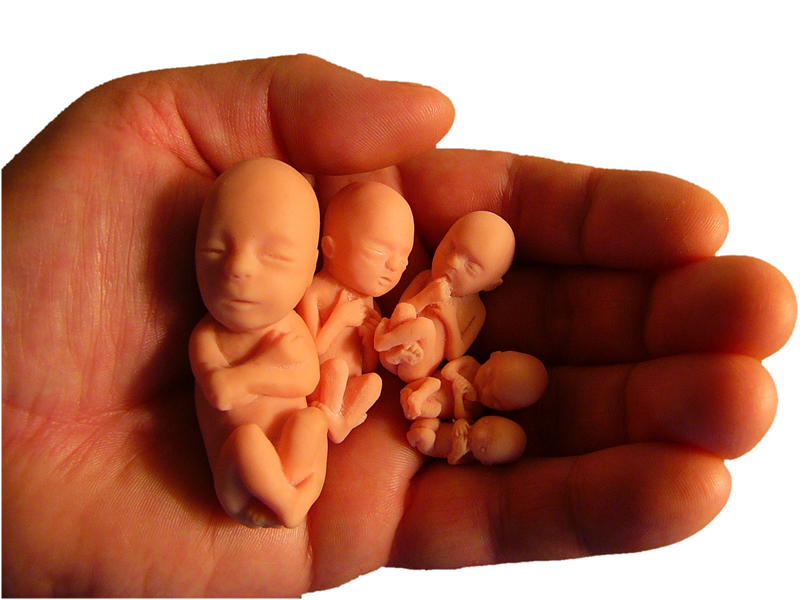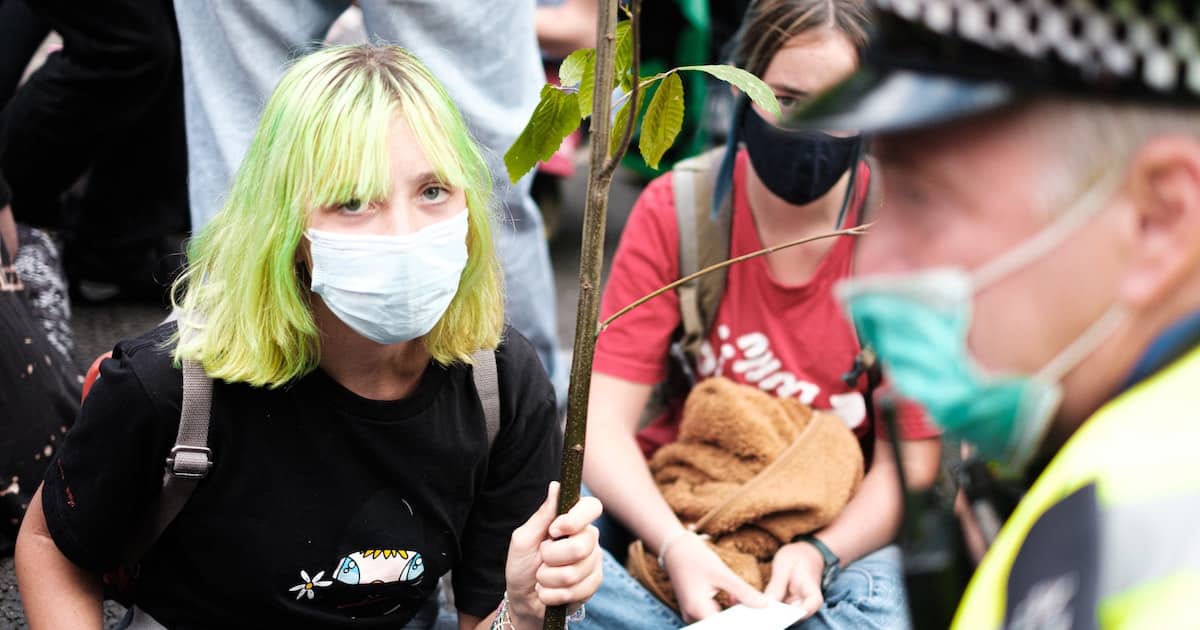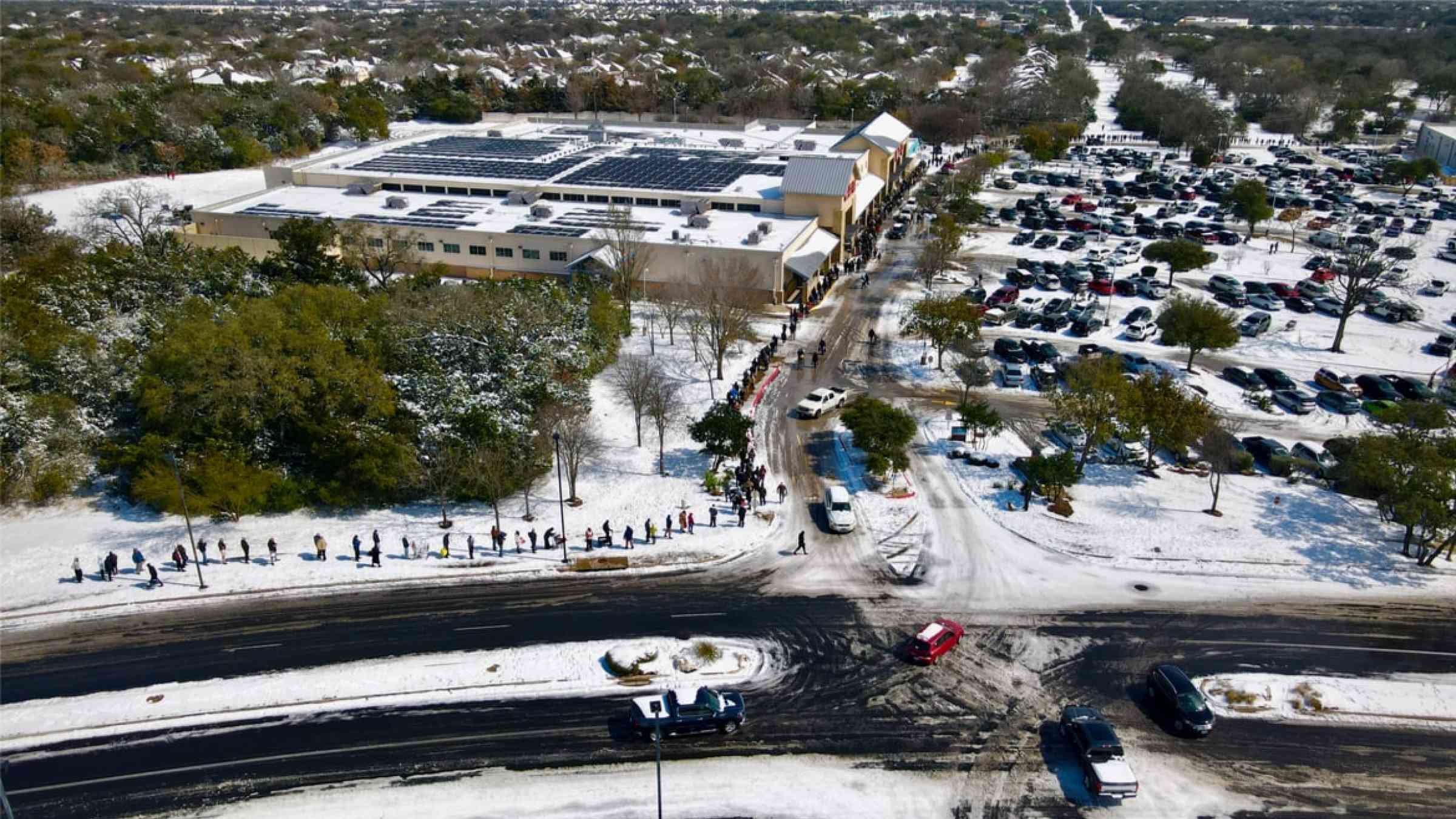Jennifer Holland
Claire Potter
28 June 2022
The US Supreme Court has overturned two landmark cases that protected a woman’s rights over her own body for 50 years. How did ‘fetal politics’ — a political movement that has turned embryos and fetuses into ‘unborn children’ endowed with unique and inviolable civil rights – gain such momentum? And what will be the outcome of this new ruling?
In preparation for the day when a reversed decision on Roe v. Wade and Planned Parenthood v. Casey might come, Claire Potter interviewed Jennifer Holland about her book, Tiny You: A Western History of the Anti-Abortion Movement.
Claire Potter: I want to start with the arresting title of your book, Tiny You. Can you tell our readers why you chose it?
Jennifer Holland: The book describes how a host of white, conservative, religious people become personally invested in fetal politics, and the title comes from a brochure created by the anti-abortion/movement for small children. It explained pregnancy and it said: ‘Everything that you are was there at this moment–a fetus is a “tiny you.”’
Next, the brochure describes abortion as when a parent chooses to kill their fetus. It’s very explicit. So, the pamphlet captures what I think is happening in the movement as a whole: inviting people to have a relationship with fetuses, imagine themselves as fetuses—and especially aborted fetuses.
Claire Potter: So, tell us how do fetuses at all stages, from conception to birth, become transformed into babies and children?
Jennifer Holland: The movement works hard from the beginning to sell this idea. First, they use analogy. They narrate themselves as a civil rights movement, comparing abortion to slavery and the dehumanization of Black people during Jim Crow. But also, they compare abortion to the Nazi Holocaust.
Second, they pair their messaging with fetal imagery to humanize fetuses and persuade people to see them as babies. By the late twentieth century, Americans cannot live their lives without encountering anti-abortion arguments conveyed through visual ephemera.
Claire Potter: What is the tradeoff between images that are arresting and suck people in, and images that risk people turning away and disengaging?
Jennifer Holland: That’s why the movement generates so many kinds of fetal ephemera because they are worried about it. It’s not that they don’t want to keep the gory photos and the embalmed fetuses, but activists realize they’re not good for every situation. For example, in the 1980s, they come up with these little plastic fetus dolls, which you can use in situations with children and young adults, dolls that aren’t going to immediately horrify parents. As the movement develops in the 1980s and 1990s, activists also invest in the idea that they are protecting women from trauma. Those that create crisis pregnancy centers (CPCs), turn away from the gorier representations and towards ultrasound imagery and fetal models.

Plastic fetus dolls. Image via Wikimedia Commons
Claire Potter: But the anti-abortion movement does not actually start out as a religious movement, and churches must be persuaded to embrace it.
Jennifer Holland: It’s a little messy, because all the activists are, in fact, religious and they are coming out of religious organizations like the Knights of Columbus, or the Catholic Lawyers Guild. Religious institutions, especially the Catholic churches, prime them for activism. The default assumption is that anti-abortion activism is a top-down movement that individuals can’t possibly be invested in.
But, especially if we look at the early 1970s, that was not the case. The Catholic church hesitated in a way that Catholic activists were upset about. So, you have activists who are meeting with priests and pressing them to give anti-abortion sermons. Not every priest needed to be pushed, but many did. And activists kept meeting with higher-ups saying, you need to commit to this, in infrastructure and money.
By 1975, the Church made those commitments.
Claire Potter: So, a grassroots movement pushed churches into this struggle.
Jennifer Holland: I don’t want to deemphasize how important religious leaders were, especially later and particularly on the religious right. But that doesn’t explain why those leaders have such an audience in the first place, and why they have such power. It’s largely because this movement has already created that audience, and those leaders tell stories that resonate because people already understand them.
By the time activists politicize churches, they’ve already integrated anti-abortion politics into the rhythms of how so many white people experience their faith.
Claire Potter: And some activists must overcome theology. In the Mormon Church, the soul does not enter the human body until birth, so to imagine abortion as killing a soul, Mormons must override their own theology.
Jennifer Holland: There are a lot of people who believe that fetal politics represent their church’s theology, even when it doesn’t. Catholic anti-abortion activists pitch the idea, hard, that the soul enters the body at conception, and the Mormon church doesn’t press hard to correct that.
I don’t think they know this, but Mormons often take up Catholic visions of spirituality and conception and they incorporate it into their vision of what Mormon theology is. Then there is the power of what Mormons are already invested in, social conservatism.
Claire Potter: One of the things I hope our readers are noticing is that you keep saying white Christians, white evangelicals, white activists. Even though many Black and Latinx people are Catholic, they don’t get involved in the anti-abortion movement. Why?
Jennifer Holland: This was a question I had from the beginning, since the book is set in multiracial spaces with a host of religious people who, as you say, are people of color. And I found that they didn’t participate in the movement, or they did for a day at most; they’re very peripheral. Longstanding activists agreed; they had all these explanations for why, but none of them really explained it.
I think that the answer is that this is a movement of white people that co-opts civil rights and racial justice rhetoric and narrates themselves as the inheritors of Martin Luther King’s civil rights movement. They speak in that language, but they don’t do any work in communities of color on any of the other issues around race. They don’t even talk about involuntary sterilization.
The people of color who came in for a day did all sorts of racial justice work, but you don’t see white anti-abortion activists going and doing work alongside them. So, abortion was a civil right that was very contained. It was a movement that was contained to white people and to fetuses that were either narrated as universal subjects or as white. That didn’t sell to communities of color, even conservative ones. They weren’t ready to imagine abortion as the origin of all social problems, which is the primary argument of the movement.
Claire Potter: So, there are people of color who are personally anti-abortion, but the movement is a big turnoff.
Jennifer Holland: Yes. So, surveys show that Latinx Catholics are more against abortion than white Catholics overall, but that does not translate into movement work. For the most part, it does not translate into voting. White activists notice this, and keep saying, ‘We don’t see them around and they don’t seem to vote on this issue.’
Claire Potter: In the book, with narratives about the fetus itself, and then you move outward toward the woman who is carrying the fetus and beyond. One of the things activists realize early on is that they cannot demonize the women who are choosing abortion. Why?
Jennifer Holland: Well, the 1970s is a moment in which feminism is reshaping conversations about sex and gender, as well as American politics. When abortion was illegal, women were punished in myriad ways, but they weren’t often prosecuted. It was abortion providers who were prosecuted.
Abortion seekers were a thorn in the movement’s side because if you’re saying that abortion is murder, well, abortion is murder. Abortion providers are murderers in this formulation, but it only makes sense that women would be too, because they’re hiring abortion providers. However, the movement realizes very quickly that that is not going to sell.
Yet, you do have a deep hostility to women that bubbles up: birth needs to be a repercussion for sex, it holds people accountable. Mostly, the movement tries to not talk about women having sex in that way: instead, they portray motherhood as the thing that makes women special.
But in the 1980s, they come up with a new idea: women are victims of abortion, that that they are both physically damaged and psychologically traumatized by it. They invent the idea of ‘post-abortion syndrome.’ This is not supported by the American Medical Association and the American Psychiatric Association, which keep saying, ‘No, this is not a common traumatic event.’
But it doesn’t matter. The movement runs with this idea that women are hurt by abortion. Laws are passed with names like ‘Women’s Right to Know’, or ‘Women’s Protection Act’. Right? And even the Supreme Court, prior to this one, starts to parrot the movement and say that women are hurt by abortion.
Claire Potter: It’s also one of the ways that fake science creeps into conservatism. Rejecting mainstream science and psychology powers a social movement.
Jennifer Holland: I thought about this a lot in relation to contemporary misinformation. Anti-abortion activists started saying very different things than they had a century before. You couldn’t trust doctors, you couldn’t trust universities, or the scholars that produced knowledge there. Even the word ‘fetus’, they argued, was a way that doctors hid the truth from you.
The only people you could really trust were in the movement.
Claire Potter: Then, the anti-abortion movement starts running pseudo-therapy groups for women who have had abortions, where they are taught that everything in their life that has gone wrong is because they had an abortion.
Jennifer Holland: I found that part of the book hard to write, and sometimes when I go back and read it, hard to read, because it’s so manipulative. The movement creates a diagnosis, ‘post-abortion syndrome’, and in CPCs, their fake reproductive health clinics, they organize ‘post-abortion therapy’, or ‘post-abortion education’. They would bring in women who had had abortions and then ask them questions intended to lead them to conclusions about their experiences. Every story led back to the idea that abortion was a traumatic event, and that doctors hadn’t told them what the negative outcomes were.
The counselors organized those details into a story, and they would try to get women to reconcile with God and with their fetus, who would get a name. ‘Can you tell God who you killed? Can you talk to your daughter, Brittany, and tell her why you killed her?’ And they imagined that by reckoning with this, by making peace with abortion, acknowledging it as a moral crime, and reconciling with God, women could regain their well-being.
Then, once they got women to that space, they asked them to become activists and speak to legislatures or go into CPCs to stop other women from having abortions. So, this was not just about emotional health, it was about making their clients into the face of abortion’s damage. What they call ‘post-abortive women’ take up important roles in the movement by the 1980s.
Claire Potter: Perhaps it’s my age, perhaps it’s the circles I run in, but I’ve never known a woman who regretted having an abortion.
Jennifer Holland: That’s what the American Psychiatric Association found too. There were a very small number of people who felt what they called ‘abortion regret’, and even that often coincided with other kinds of things going on in their lives. There were people I found whose lives didn’t pan out the way they expected, who imagined themselves as upwardly mobile, and who thought sex would lead to marriage and a middle-class lifestyle. Instead, the sex they had led them into bad marriages, unexpected pregnancies, abortions, and lives that were more working-class. We can imagine the structural or personal reasons why that occurred, but at least some believed that their lives didn’t pan out because of abortion.
Claire Potter: Let’s dig back into the crisis pregnancy centres. We mentioned them earlier but they’re a highly visible and enduring part of this movement.
Jennifer Holland: The first ones were started in Canada in 1968, but they almost immediately moved into the United States. I call them fake clinics because they masquerade as abortion providers, and their advertising is geared to that. Common advertisements say: ‘Pregnant? Need help? Call this number.’
Once they got abortion seekers into their space, they gave them a political pitch. They gave them free pregnancy tests to make sure they were pregnant, they got ultrasound machines, and then they would make anti-abortion arguments, showing them images and fetal models, and trying to convince people to keep the pregnancy. And they would never refer anyone for abortions or birth control.
One of the later strategies was to put these CPCs right next to abortion providers in the same complex, so that people became confused. And they were. Activists I talked to said that everybody was calling them was looking for an abortion, not to be talked out of it. Only women activists staffed these centres: they imagined themselves as mothers or friends, having a kitchen table conversation. But they also falsely presented themselves as medical providers: taking urine, and giving clients medical arguments about why abortion is murder and the physical damage it will do.
Even if they didn’t convince a ton of people, they convinced some people, so this became a special space for women anti-abortion activists to try to stop abortion one woman at a time. Importantly, these spaces also get an incredible amount of state and federal money, especially as the movement gets stronger in the late twentieth and early twenty-first centuries. And the people who come are young women and poor women and women of color, they’re all people who for one reason or another are not getting their healthcare in other places.
Claire Potter: They’re women who aren’t attached to the healthcare system at all.
Jennifer Holland: Right.
Claire Potter: The other thing this makes me think about is when the Jane Collective began its work in Chicago, they put flyers up on telephone poles that said: ‘Pregnant? Don’t want to be? Call Jane.’ And there’s a number.
Jennifer Holland: I think anti-abortion activists were drawing on that ambiguous message, but of course, they want to reverse the desires of the people coming to them. That’s the whole pitch: luring in people who don’t want your services and convincing them that they do.
And of course, a lot of people became traumatized by this bait and switch. They were shown graphic imagery and films, they were told terrible things, and they had been brought there by deceit. In more feminist-oriented states, Democratic states, you get a lot more interest in trying to get these people to represent themselves accurately. That never really pans out because that would ruin what these centres are built to do.
Claire Potter: These CPCs also decide to work on their clients’ moral fibre too. How does that shift happen?
Jennifer Holland: Well, the fact of the matter is, many abortion seekers live in cities where people circulate knowledge, and one thing CPCs always had was to serve a donations closet with diapers, clothes, used furniture, and so on. They hoped that if they could convince someone not to have an abortion, and provide a little bit of material help, it would be enough. But then, they realized that some people were not actually considering abortion at all, and knew that if they came and said the right things they could get access to things they needed.
And so, you have a whole host of centres who say, ‘These women are taking advantage of us.’ Then, one activist came up with a program that became a national program in CPCs called Earn While You Learn. Some of them were about prenatal care and taking care of your newborn baby. But a lot of classes were about conveying conservative ideology. You had to take these classes to get your ‘mommy dollars’, which you could then use to get things from the donations closet or ‘baby boutique’, as they sometimes call them.
Claire Potter: Then, these activists extend the circle of trauma to living children. Why?
Jennifer Holland: Early on, the movement was concerned that schools and the media were creating a ‘pro-choice generation’ by indoctrinating children. And so, they imagine that they need to come into youth spaces and politicize young people.
One of the central arguments they make is that young people are survivors because they were born, as opposed to being aborted fetuses. And so, as survivors, children have a responsibility to speak on behalf of those who didn’t survive. There are organizations that call themselves Survivors of the Abortion Holocaust that invite young people into the movement, saying: ‘You have a responsibility to engage in these politics because you were born.’
Evangelicals build whole worlds around young people so they don’t have to go outside for their music, their reading – they can just consume evangelically oriented stuff. So, activists come into schools and homes, and churches, and I think it resonates with young people in part because of the ways in which this movement, unlike a lot of conservative movements, draws on rights rhetoric. A lot of young people want to be part of a justice campaign, which was so much a part of American culture by the late twentieth century. Anti-abortion activism means that white conservative youth can do that in a way that feels meaningful, and that doesn’t overturn social hierarchies.
So fetal politics becomes more and more central to what it means to a young person to be evangelical, to be a young conservative, and to be an American. In addition, the idea of young people as lives that have been saved plays an incredibly important role in the movement, since activists imagine that abortion is a slippery slope to all born people being at risk. They argue, inaccurately, that abortion was central to Hitler’s philosophy, a path to dehumanization and genocide, the killing of the elderly, and anyone we don’t want around anymore.
Claire Potter: So, we are entering a period in which abortion will be available in some states, and not in others. How will the movement adapt to partial victory?
Jennifer Holland: There are two big avenues that I see. One is that they will continue working for a total victory. Dobbs is not the end game. People talk all about differences between radical and mainstream anti-abortion activists, and there are differences in strategy. But there are no differences in the end goal, which is to make abortion illegal everywhere. The only exception would be the life of the mother, and that’s not a stable exception.
So, overturning Roe and Casey is not the end. They need to continue working to make abortion illegal everywhere, and that could either come through Congress, and I think they will go back to the court and see if they can get fetuses protected under the 14th Amendment as citizens. So that’s one direction.
We also need to see what the next steps are in terms of the other cases that rely on a right to privacy. Gay rights, birth control, marriage issues—all these things look like they could be on unstable ground.
But I think there are new challenges for the movement because Roe has been an easy punching bag: you had the government protecting at least some abortions in every state. But they don’t have that anymore, and more importantly, in the states where abortion will now be illegal, they will now have the power of the state.
What will they do with that? Anti-abortion activists have been able to imagine a future where everyone is better off without legal abortion. Women are no longer traumatized, they’re having bigger families, violence is stemmed, racism gets better. But once they have the power of the state, and Roe no longer stands, they’re going to have to face it that the future they promised people isn’t coming.
In addition, to stop abortion-seekers in Oklahoma, where I am, they will have to stop those people from moving across state boundaries. They must stop the mail from coming in with abortion pills. Are they going to use the power of the state to do that? Are they going to track people online? Are they going to prosecute people who have sought abortions? Because these things will run up against some of the core arguments they’ve made in the past: that women are not going to be prosecuted, that they were only always victims, and they were going to be better off without an abortion.
The movement is going to have to reckon with that. I’ve heard that some people in the movement think that deeply Republican states will, or the movement itself, will press state legislators to create new social safety nets for all these people who have larger families than they thought. But I don’t think that’s going to happen. I can say pretty certainly that Oklahoma’s legislature is not going to be passing such laws.
So, there is now a possibility that the movement’s own narratives will come under pressure within the movement itself, and potentially, from the voters who’ve supported them for so long.











